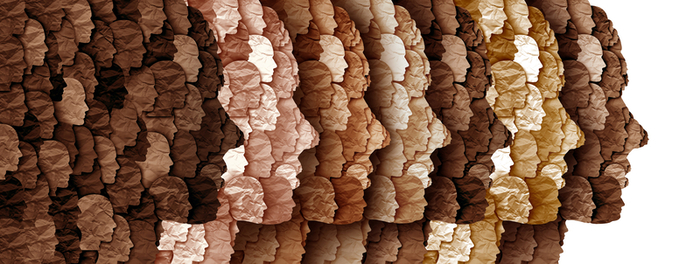- Calls to this hotline are currently being directed to Within Health, Fay or Eating Disorder Solutions
- Representatives are standing by 24/7 to help answer your questions
- All calls are confidential and HIPAA compliant
- There is no obligation or cost to call
- Eating Disorder Hope does not receive any commissions or fees dependent upon which provider you select
- Additional treatment providers are located on our directory or samhsa.gov
Cultural Considerations in Eating Disorder Treatment

The idea and experience of “culture” is one of the most complex concepts of a diverse world. Cultural factors can touch on everything, from the clothes people wear to the food they eat, the art they create, the way they honor milestones, and the qualities of life that are ultimately prioritized within a certain established group.
One of the strongest cultural connections, for many people, is food. As an essential element to sustain life, food is something everyone must reckon with in some way, which can lead to any number of culturally-specific views on the subject, including preferred dishes or ingredients and distinctive eating habits.
Appearance is another aspect of life which often has strong ties to culture. Whether consciously or not, most distinctive social groups have certain standards and ideals for what is considered aesthetically appropriate, beautiful, or undesirable.
As such, the culture in which someone is raised or identifies with can have a deep impact on their relationship with both food and their own body, influencing—subliminally or outrightly—their eating habits and body image. And these considerations are crucial to keep in mind when treating eating disorders.
Culture and Body Image
Body image is a difficult concept to understand completely, but it is often thought of as a combination of someone’s thoughts, feelings, and perceptions about their own body and general physical appearance. And culture has been found to have a powerful impact on these perceptions. [1]
While a majority of studies have examined Western cultures, which typically idolize thinness, and have nearly exclusively focused on women, clear patterns have still emerged within these confines.
Cultural Preferences
Studies conducted on the differences between Black women and white women have frequently found different sets of beauty ideals, with Black women generally preferring curvier bodies, and white women preferring thinner bodies. [2]
Another study found that Chinese women, when compared to women from Croatia, showed higher rates of thin internalization and body dissatisfaction. This group also reported experiencing more pressure from friends and family to adhere to cultural beauty ideals, which points to another aspect of cultural influence on body image and body weight. [3]
And one cross-cultural review that examined the body image attitudes of men from varying backgrounds also found patterns of preferences, including Black men in the U.S. reporting overall higher levels of body satisfaction than white men, and Pacific Islanders preferring larger body shapes than other cultures, among other findings. [5]
Culture and Eating Disorders
While cultural norms work toward shaping body image, they can also have a large impact on the development of eating disorders. Indeed, studies have shown that the Westernized ideal of thinness can also indirectly encourage eating disorders in different cultural groups.
One study, which summarized several others on the subject, found that, overall, women of different ethnicities who were living in Western cultures were reporting higher rates of negative body image, with a majority of those women striving to diet or lose weight, regardless of the traditional beauty ideals of their respective cultures. [1]
Another study found that eating disorder diagnoses, including those for anorexia nervosa (AN) and bulimia nervosa (BN), were on the rise globally, which it surmised was, in part, due to the exportation of Western culture and ideals. [4]
Yet, the study warned that most of the previous research on eating disorders has been conducted on white Westernized women, and advised that different types of eating disorders may impact different cultural or ethnic groups in different ways that have yet to be discovered through research.
These kinds of blind spots can be especially dangerous, and are an important part of why cultural considerations must be taken into account when treating eating disorders.
Identity, Body Image, and Eating Disorders
Aside from the culture in which someone is raised or with which they closely identify, someone’s sense of identity is also closely connected to the formation of body image.
How individuals perceive their bodies is often intimately shaped by their gender identity, whether they are cisgender, transgender, non-binary, or any other type of gender. And how they identify through the groups they choose to participate in can also play a role in shaping body image.
LGBTQIA+ Individuals
Research has shown that gender identity and sexual orientation play a role in many aspects of body image, and may make someone more susceptible to developing eating disorders.
One study found anorexia nervosa, bulimia nervosa, and binge eating disorder (BED) to occur at especially high rates among transgender men and women, when compared to cisgender peers. [8]
Another showed that people of certain sexual orientations were more likely to physically compare themselves to others and experience body dissatisfaction, with researchers suggesting that different cultural standards among the LGBTQIA+ community may play a role. [6]
Athletes
Athletes also face significant pressure to maintain a specific body type or weight for optimal performance, whether it’s an emphasis on a slimmer body, a more muscular body, or a specific body shape that’s revered in a particular sport.
A constant focus on physical health, exercise, and diet can also play a role in developing an eating disorder or making an eating disorder worse. In fact, athletes tend to have higher rates of disordered eating behaviors when compared to other populations, with one study finding 13.5% of athletes showcasing disordered eating attitudes or behaviors compared to 4.5% of non-athletes. [7]
Once again, recognizing the impact of these particular issues and the different ways they may influence different groups is critical in developing more inclusive and effective treatments for eating disorders.
Cultural Considerations for Eating Disorder Treatment
Each individual has unique cultural and identity-related factors influencing their experiences and perspectives. By considering these factors, treatment providers can create more effective and culturally sensitive treatment plans that cater to each patient’s needs.
Cultural Beliefs and Practices Related to Food
Food plays a significant role in many cultures, and certain foods may hold specific symbolic or spiritual meanings. Treatment providers must understand these cultural beliefs and practices, as they can impact personal views and interactions with food.
For example, in some cultures, sharing food is an essential expression of hospitality and generosity. In others, certain foods may be reserved for specific occasions or used in religious ceremonies.
Understanding these cultural nuances can help treatment providers create meal plans and nutritional guidelines that are more culturally appropriate.
Family Dynamics and Support Systems
Family dynamics and support systems can also significantly impact an individual’s eating disorder and recovery.
In some cultures, family members are central to emotional support and care for their loved ones. In others, seeking help outside the family may be stigmatized or discouraged.
It’s the role of treatment providers to understand each patient’s family dynamics and support systems and involve family members in the treatment process as appropriate.

Creating Culturally Sensitive Treatment Plans
A treatment plan for an eating disorder should be as individual as the person receiving it, and the beliefs and experiences of various cultural groups should be a major consideration when developing these roadmaps to healing.
Treatment providers should work to understand how cultural identity, cultural attitudes, and body image impact each patient’s relationship with food and their own body and adjust treatment plans accordingly.
Providers should also look out for potential blind spots in the research, including the different ways certain eating disorders or disordered eating attitudes may manifest in different cultures.
It’s important to understand that anyone can develop eating disorders. But by incorporating these considerations into treatment plans, care providers can create more inclusive and practical strategies tailored to best serve each patient’s unique needs.
Resources
- Bakshi S. (2011). Women´s body image and the role of culture: A review of the literature. Europe’s Journal of Psychology; 7(2).
- Kelch-Oliver K, Anics J. (2011). Black Women’s Body Image: An Analysis of Culture-Specific Influences. Women & Therapy; 34(4).
- Stojcic I, Dong X, Ren X. (2020). Body Image and Sociocultural Predictors of Body Image Dissatisfaction in Croatian and Chinese Women. Frontiers in Psychology; 11.
- Pike KM, Hoek HW, & Dunne PE. (2014). Cultural trends and eating disorders. Current Opinion in Psychiatry; 27(6):436–442.
- Ricciardelli L, McCabe M, Williams R, Thompson JK. (2007). The role of ethnicity and culture in body image and disordered eating among males. Clinical Psychology Review; 27(5):582-606.
- Meneguzzo P, Collantoni E, Bonello E, Vergine M, Behrens SC, Tenconi E, Favaro A. (2021). The role of sexual orientation in the relationships between body perception, body weight dissatisfaction, physical comparison, and eating psychopathology in the cisgender population. Eating and weight disorders; 26(6):1985-2000.
- Milano W, Milano L, & Capasso A. (2020). Eating Disorders in Athletes: From Risk Management to Therapy. Endocrine, Metabolic & Immune Disorders Drug Targets; 20(1):2-14.
- Nagata JM, Ganson KT, & Austin SB. (2020). Emerging trends in eating disorders among sexual and gender minorities. Current Opinion in Psychiatry 33(6):562–567.
The opinions and views of our guest contributors are shared to provide a broad perspective on eating disorders. These are not necessarily the views of Eating Disorder Hope, but an effort to offer a discussion of various issues by different concerned individuals.
We at Eating Disorder Hope understand that eating disorders result from a combination of environmental and genetic factors. If you or a loved one are suffering from an eating disorder, please know that there is hope for you, and seek immediate professional help.
Published on October 4th, 2023 on EatingDisorderHope.com

The EatingDisorderHope.com editorial team comprises experienced writers, editors, and medical reviewers specializing in eating disorders, treatment, and mental and behavioral health.

